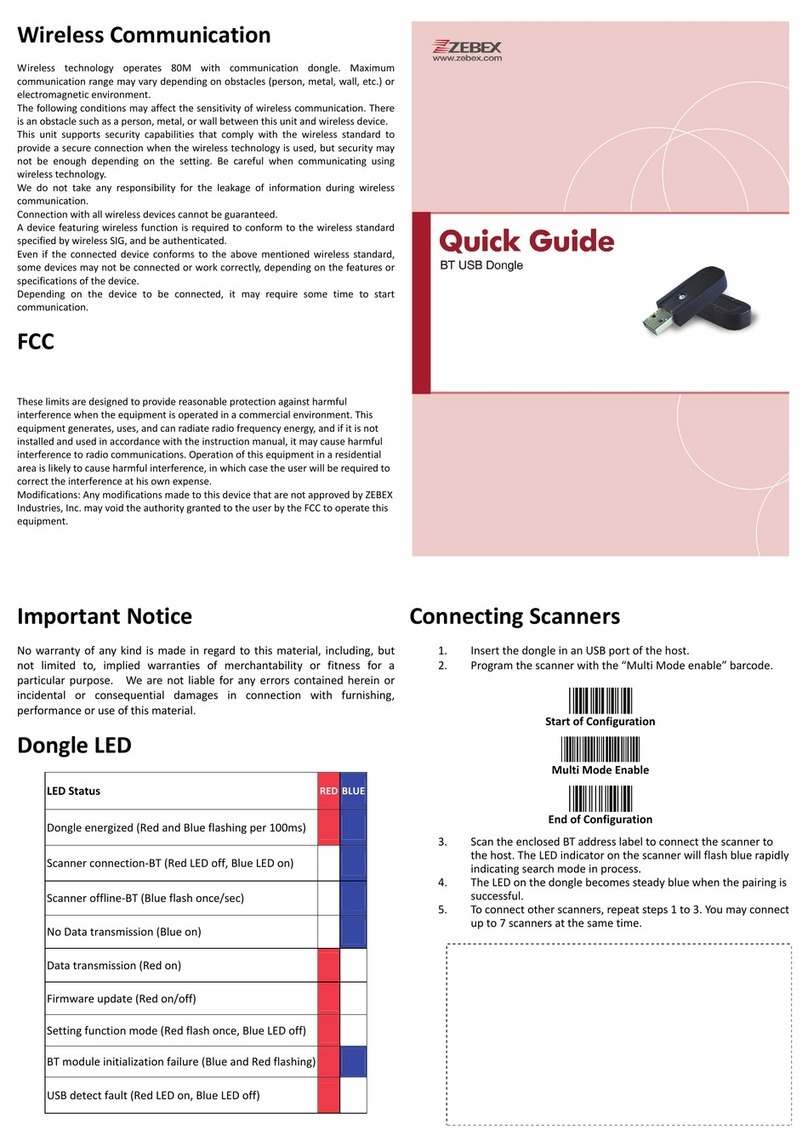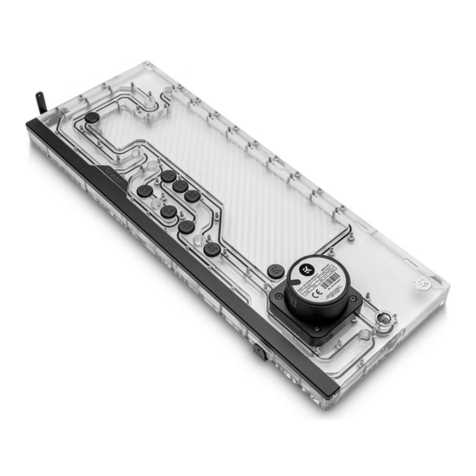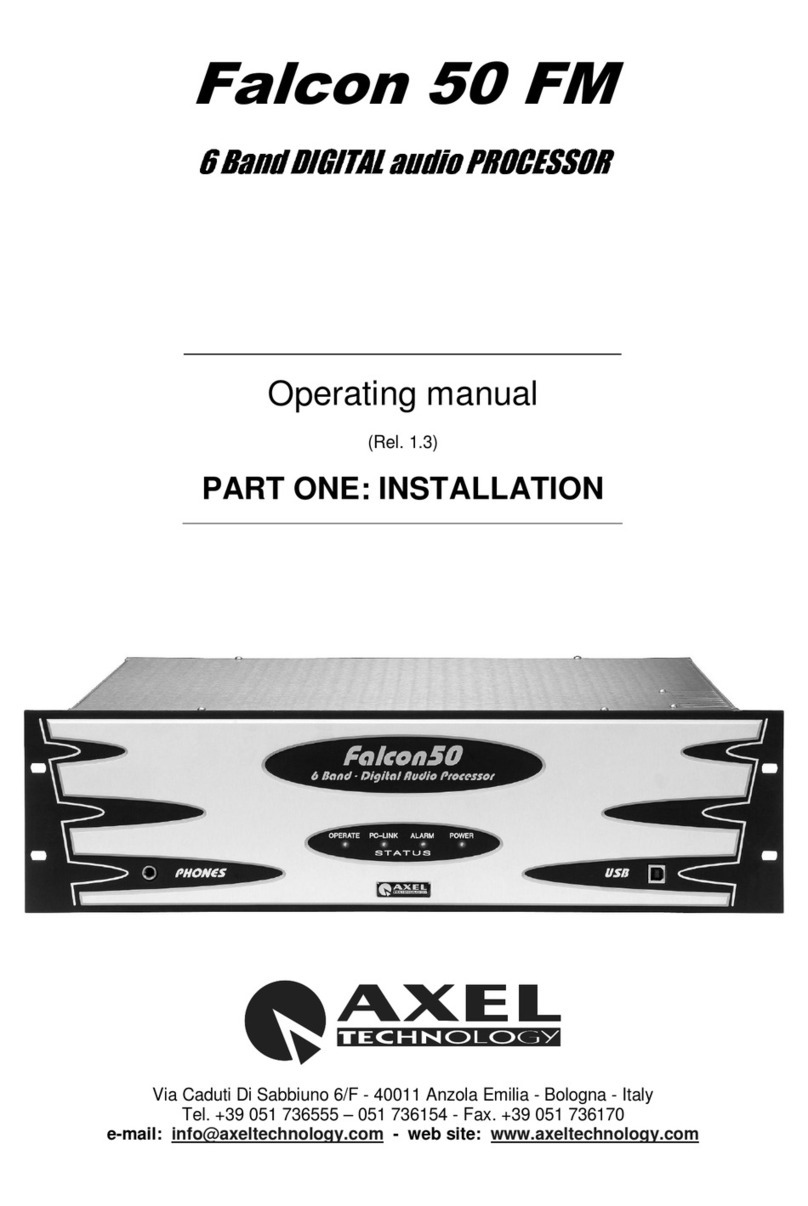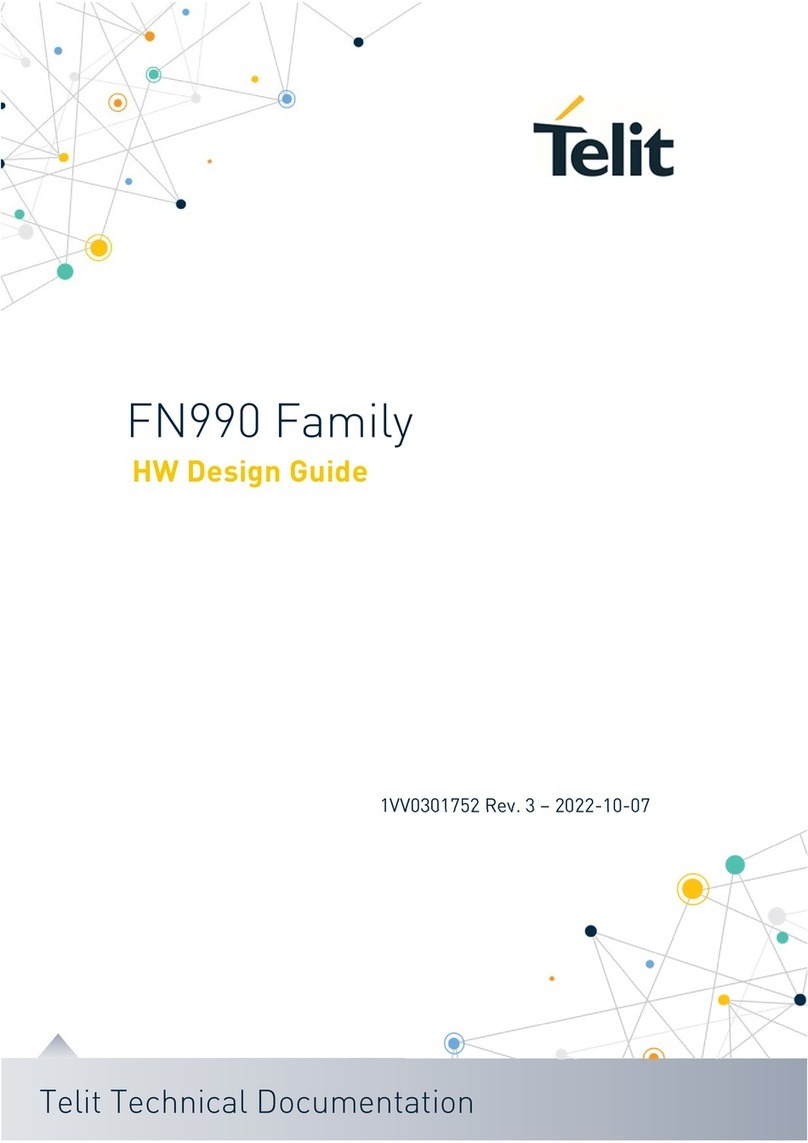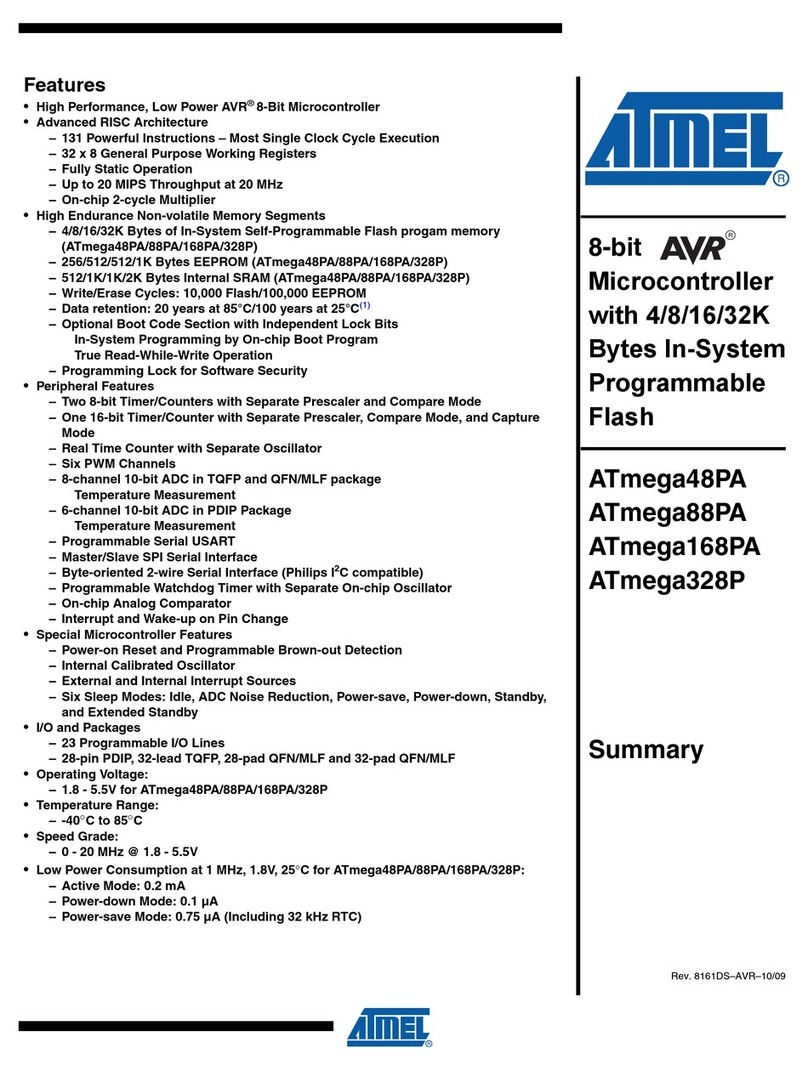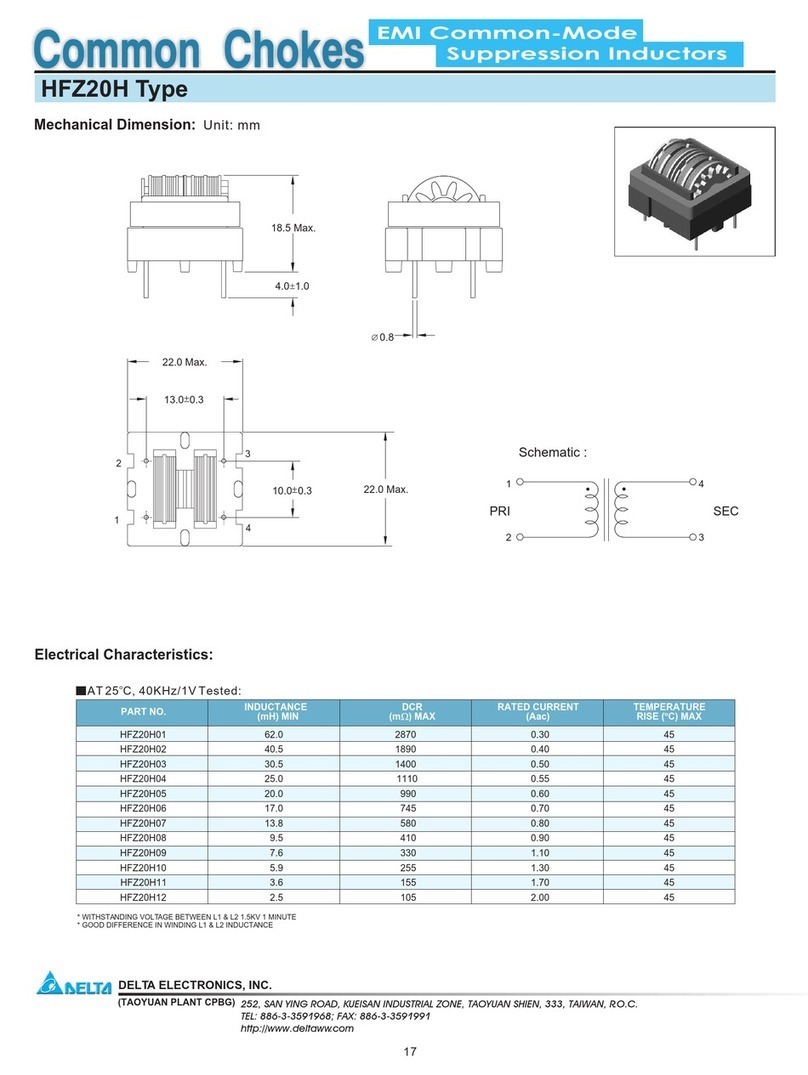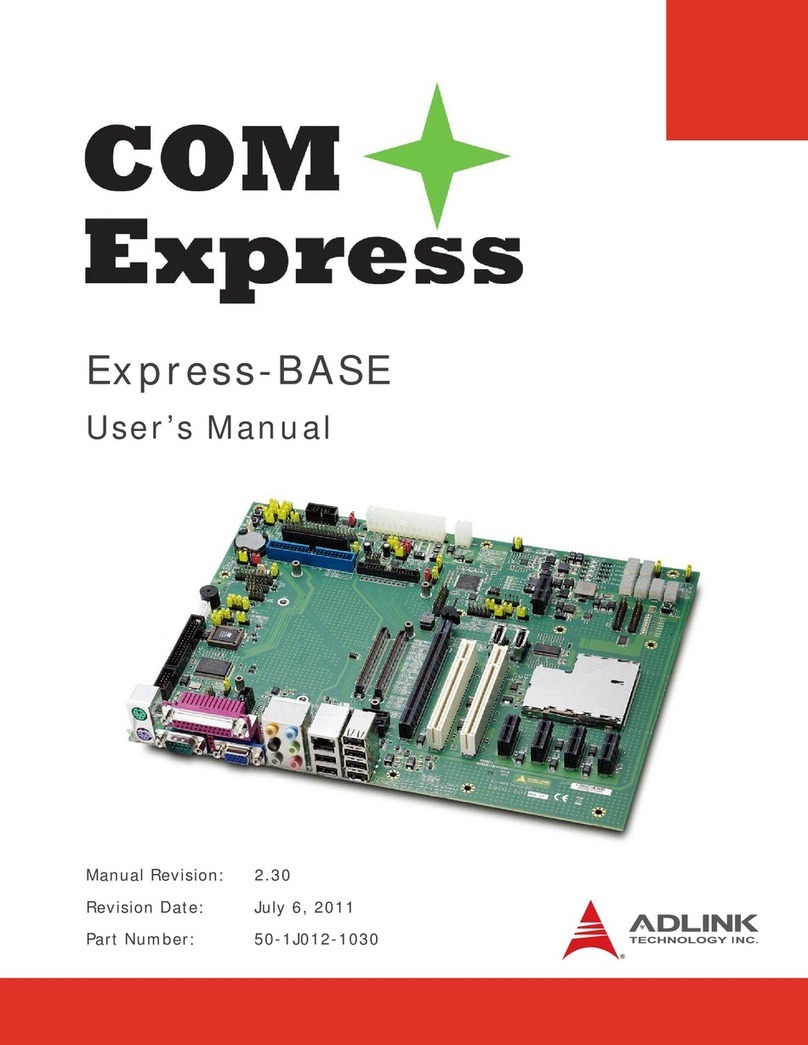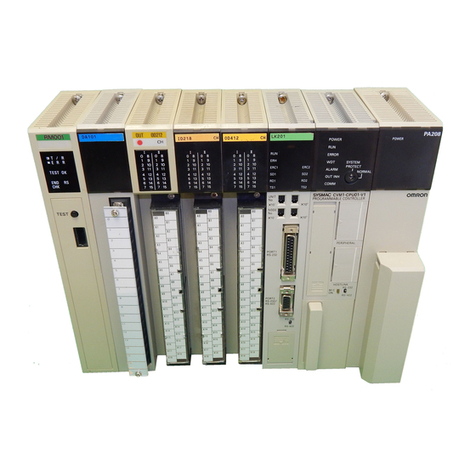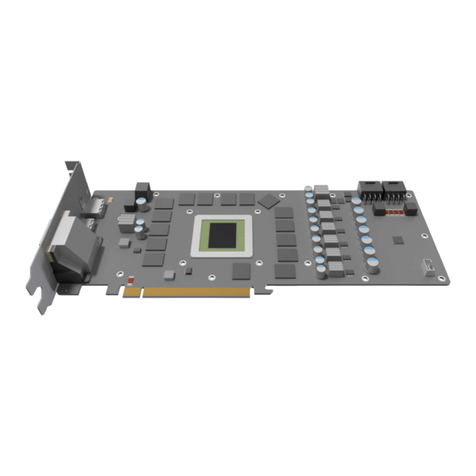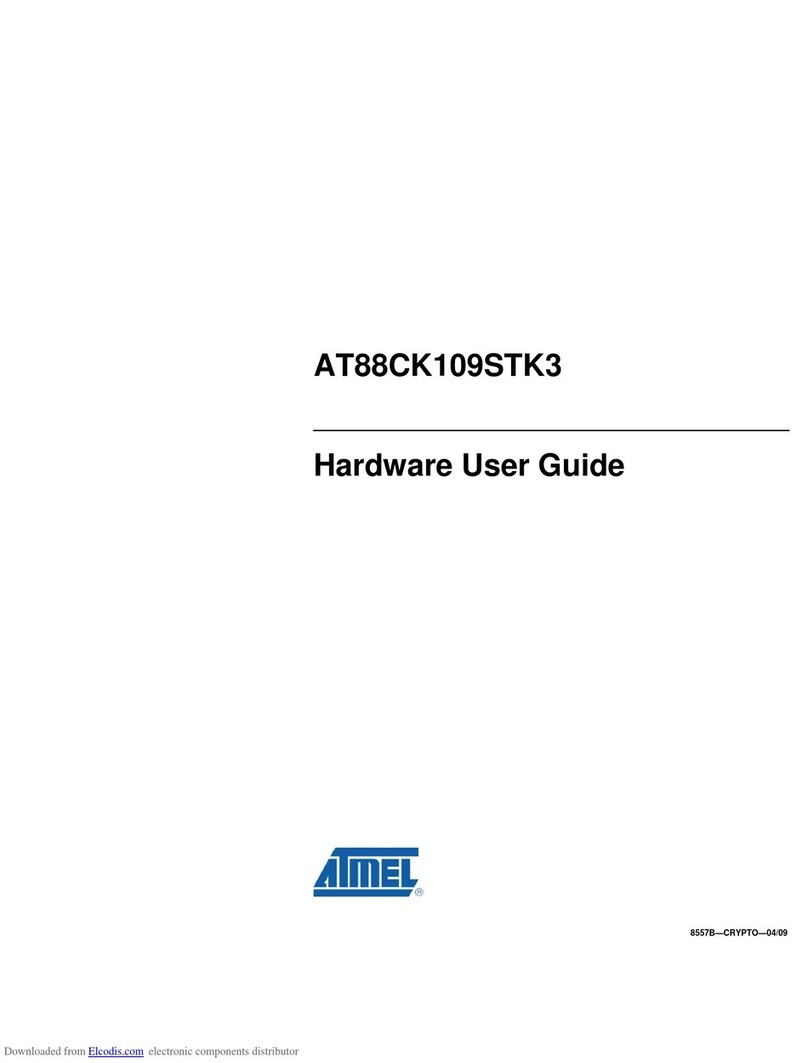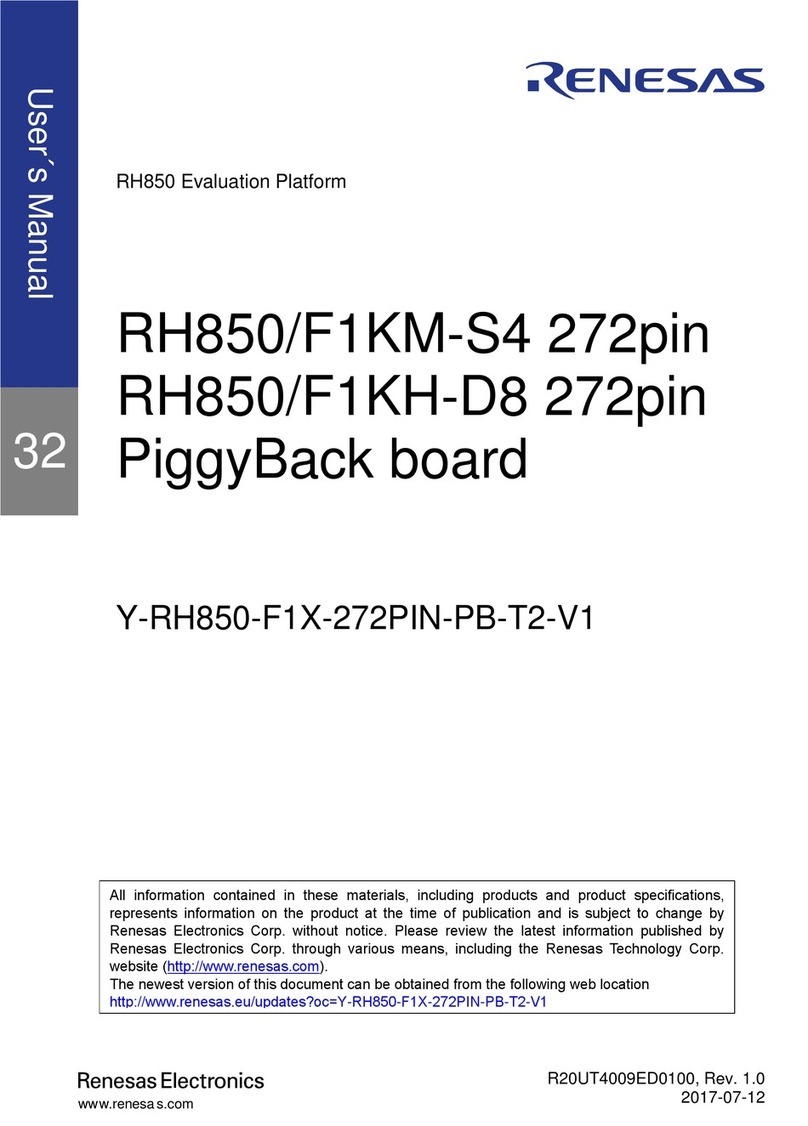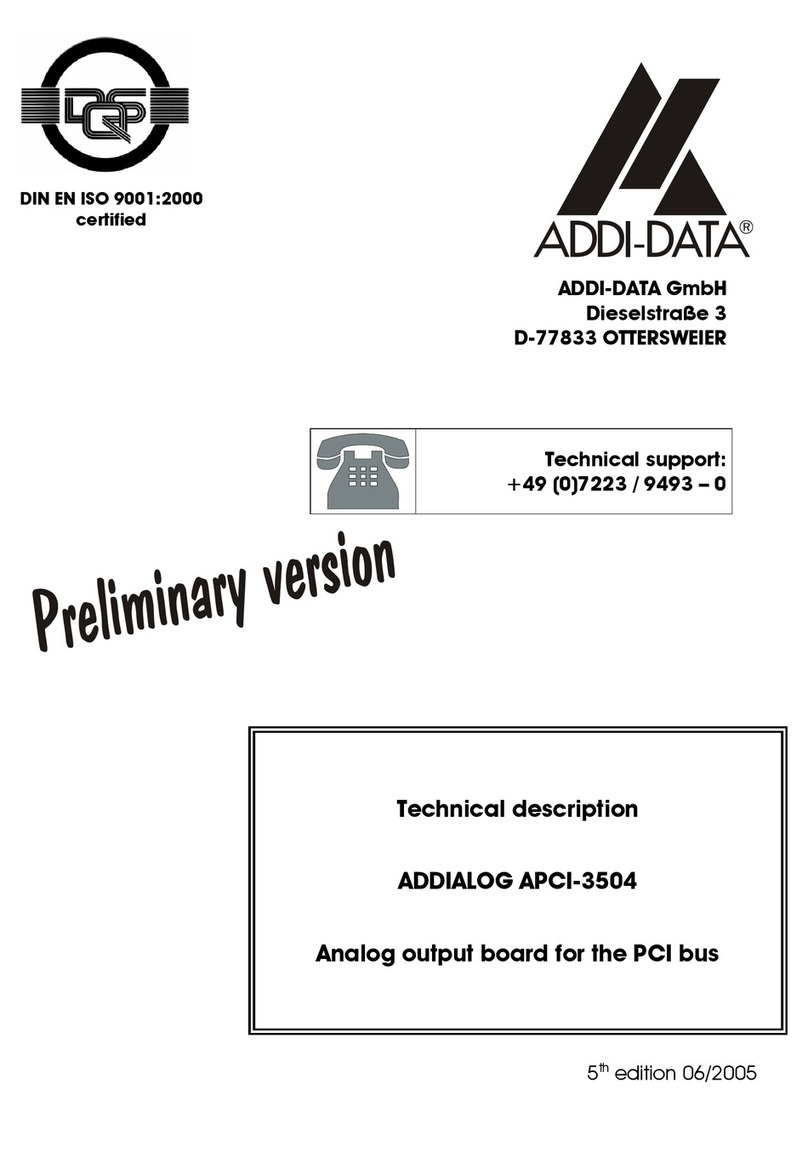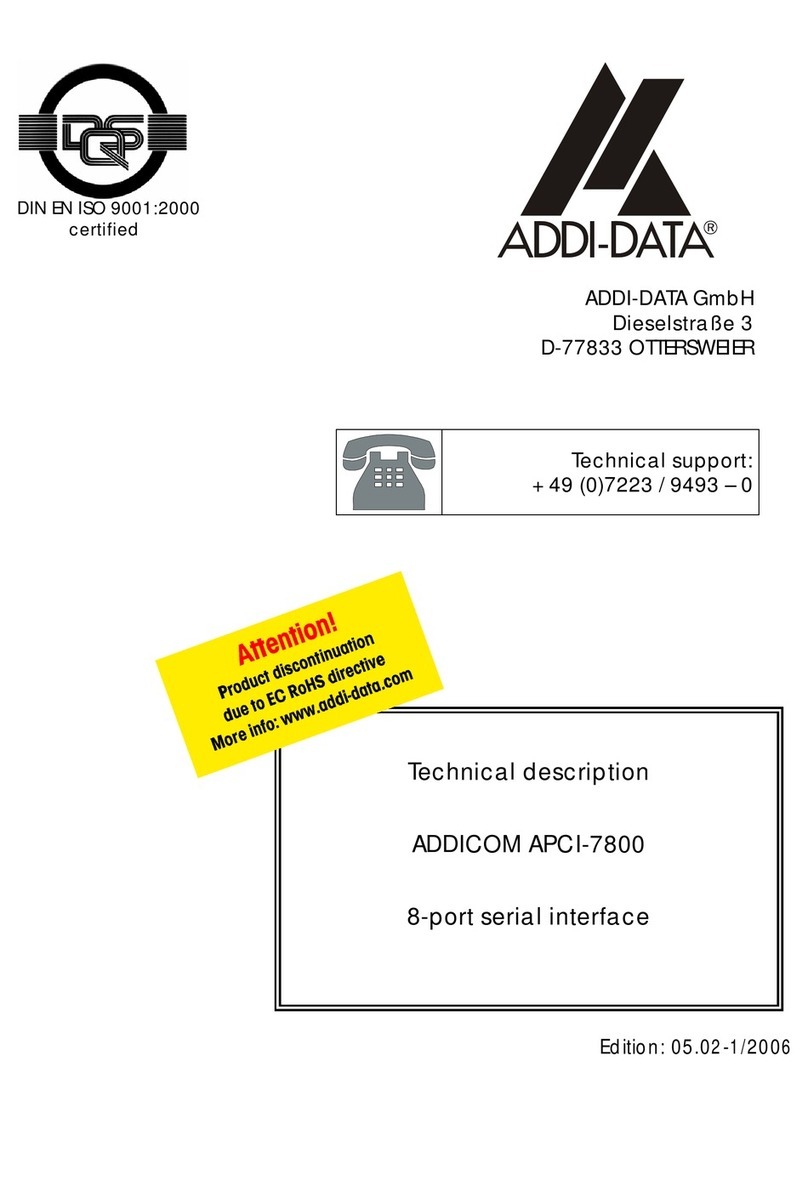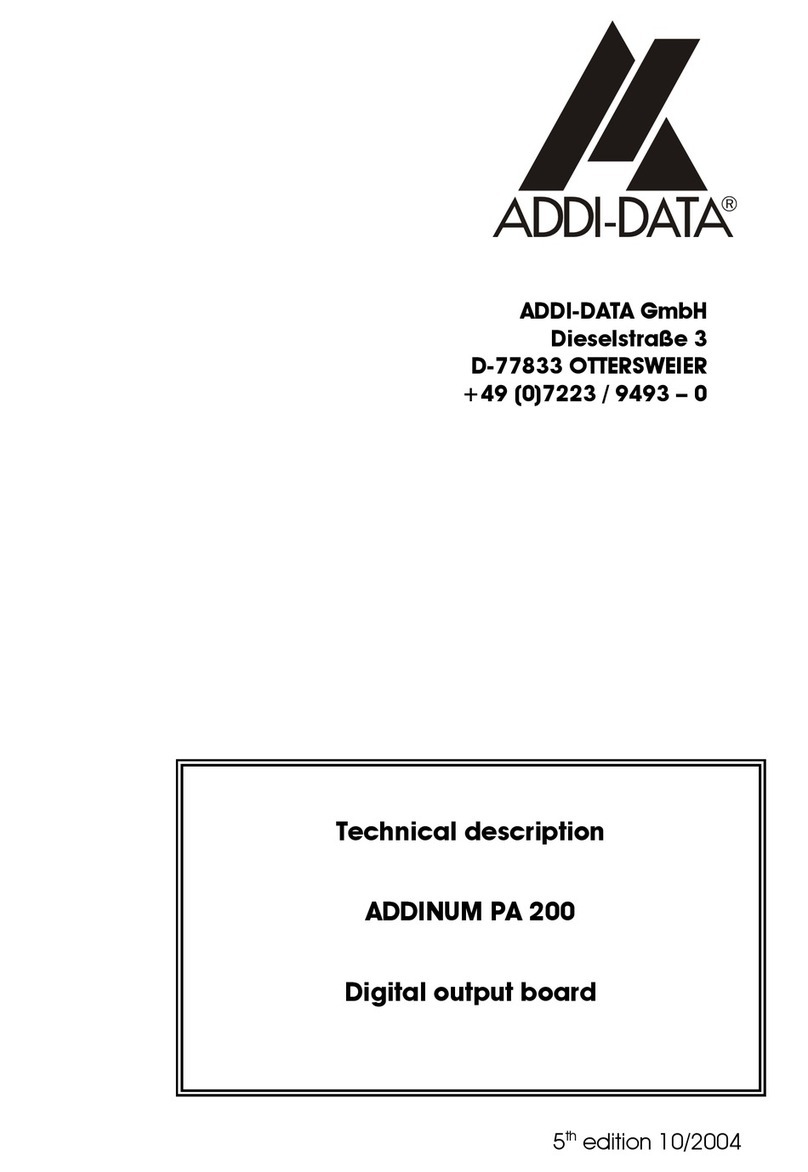
APCI-1710 Figures and Tables
7
Figures
Fig. 3-1: Correct handling................................................................12
Fig. 4-1: Output current versus differential output voltage................16
Fig. 6-1: PCI-5V slot (32-bit)...............................................................23
Fig. 6-2: Inserting the board.............................................................24
Fig. 6-3: Fastening the board at the back cover .............................24
Fig. 7-1: Registration program ADDIREG...........................................26
Fig. 7-2: Configuration of a new board............................................28
Fig. 7-3: PCI boards..........................................................................29
Fig.7-4: SET1710: Configuration program for modules.....................32
Fig. 7-5: Selection of a APCI-/CPCI-170............................................32
Fig. 7-6: General information...........................................................33
Fig. 7-7: Function list and module configuration..............................33
Fig. 7-8: Setting a module configuration by mouse click.................34
Fig. 7-9: Setting a module configuration by keyboard.....................35
Fig. 8-1: 50-pin SUB-D male connector (ST1)....................................36
Fig. 8-2: Terminal ST2........................................................................39
Fig. 8-3: Position of the connector ST5 on the board........................40
Fig. 8-4: Pin assignment of the ribbon cable connector..................40
Fig. 8-5: Connection of a mass-related input..................................42
Fig. 8-6: Connection of a mass-related output................................43
Fig. 8-7: Connection of a differential input ......................................43
Fig. 8-8: Example: Connection of 2 incremental encoders at FM1.44
Fig. 8-9: Connection of a differential output....................................44
Fig.8-10: Connection at TTL inputs and outputs ...............................45
Fig. 9-1: Block diagram of the APCI-1710 ........................................46
Fig. 9-2: Block diagram of the digital inputs and outputs (1 function
module) ..........................................................................48
Fig. 9-3: Basic circuit of the differential inputs (5 V)...........................49
Fig. 9-4: Basic circuit of the differential inputs 5 V; used as TTL inputs49
Fig. 9-5: Basic circuit of the 24 V inputs (APCI-1710-24V) .................49
Fig. 9-6: Basic circuit of the digital inputs 24 V .................................50
Fig. 9-7: Basic circuit of the digital inputs 5 V (OPTION).....................50
Fig. 9-8: Basic circuit of the digital outputs 5 V – differential.............51
Fig. 9-9: Basic circuit of the digital output H – 24 V ..........................51
Fig. 9-10: Basic circuit of a digital output H – 5 V (OPTION)...............51
Fig. 10-1: Synchronous and asynchronous mode............................72
Fig. 10-2: Synchronous and asynchronous mode............................72
Tables
Table 5-1: Maximal input lines on the board....................................20
Table 5-2: Maximal input lines on a module....................................20
Table 5-3: Maximal output lines on the board .................................20
Table 5-4: Maximal output lines on a module..................................21
Table 5-5: Possible applications of the counter board....................21
Table 5-6: Maximal application functions on the board..................22




















